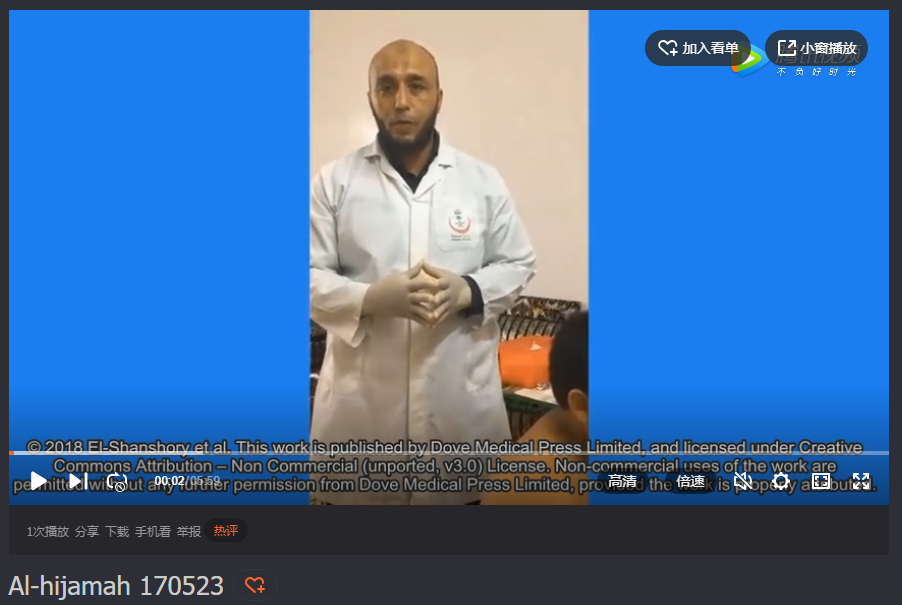9 0 8 0 2
论文已发表
注册即可获取德孚的最新动态
IF 收录期刊
- 2.6 Breast Cancer (Dove Med Press)
- 3.9 Clin Epidemiol
- 3.3 Cancer Manag Res
- 3.9 Infect Drug Resist
- 3.6 Clin Interv Aging
- 4.8 Drug Des Dev Ther
- 2.8 Int J Chronic Obstr
- 8.0 Int J Nanomed
- 2.3 Int J Women's Health
- 3.2 Neuropsych Dis Treat
- 4.0 OncoTargets Ther
- 2.2 Patient Prefer Adher
- 2.8 Ther Clin Risk Manag
- 2.7 J Pain Res
- 3.3 Diabet Metab Synd Ob
- 4.3 Psychol Res Behav Ma
- 3.4 Nat Sci Sleep
- 1.9 Pharmgenomics Pers Med
- 3.5 Risk Manag Healthc Policy
- 4.5 J Inflamm Res
- 2.3 Int J Gen Med
- 4.1 J Hepatocell Carcinoma
- 3.2 J Asthma Allergy
- 2.3 Clin Cosmet Investig Dermatol
- 3.3 J Multidiscip Healthc

Al-hijamah (wet cupping therapy of prophetic medicine) significantly and safely reduces iron overload and oxidative stress in thalassemic children: a novel pilot study
Authors El-Shanshory M, Hablas NH, Shebl Y, Fakhreldin AR, Attia M, Almaramhy HH, Baghdadi H, Ayat M, Albeihany A, El-Dardear A, Ibrahim HA, Mahmoud HS, Nabo MMH, El Sayed SM
Received 9 April 2018
Accepted for publication 24 June 2018
Published 14 December 2018 Volume 2018:9 Pages 241—251
DOI https://doi.org/10.2147/JBM.S170523
Checked for plagiarism Yes
Review by Single-blind
Peer reviewers approved by Dr Justinn Cochran
Peer reviewer comments 2
Editor who approved publication: Dr Martin Bluth
Background: Thalassemia is a major health problem due
to iron overload, iron deposition and oxidative stress-induced tissue damage.
Here, we introduce Al-hijamah (a minor surgical excretory procedure) as a novel
percutaneous iron excretion therapy. Al-hijamah is a wet cupping therapy of
prophetic medicine, and prophet Muhammad, peace be upon him, strongly recommended
Al-hijamah, saying: “The best of your treatment is Al-hijamah”.
Aim of the study: Our study aimed at investigating the safety, iron chelation,
pharmacological potentiation and oxidant clearance effects exerted by
Al-hijamah to thalassemic children.
Patients and methods: Ethical committee’s approval and patients’ written agreement
consents were obtained. We treated 20 thalassemic children (15 males and five
females aged 9.07±4.26 years) with iron chelation therapy (ICT) plus
Al-hijamah (using sterile disposable sets and in a complete aseptic
environment) vs a control group treated with ICT only. This clinical trial was
registered in the ClinicalTrial.gov registry under the name “Study of the
Therapeutic Benefits of Al-hijamah in Children with Beta Thalassemia Major”
(identifier no NCT 02761395) on 30 January 2016.
Results: Al-hijamah
was quite simple, safe, effective, tolerable (with no side effects) and
time-saving procedure (30–60 minutes). A single session of Al-hijamah
significantly reduced iron overload (P <0.001) in all thalassemic children. Al-hijamah
significantly decreased serum ferritin by 25.22% (from
3,778.350±551.633 ng/mL to 2,825.300±558.94 ng/mL), significantly
decreased oxidative stress by 68.69% (P <0.05; serum malondialdehyde dropped from
42.155±12.42 to 13.195±0.68 nmol/L), exerted pharmacological potentiation
to ICT and significantly increased total antioxidant capacity (P <0.001) by
260.95% (from 13.195±0.68 nmol/L to 42.86±12.40 nmol/L through
excreting reactive oxygen species). Moreover, therapeutic indices for
evaluating Al-hijamah were promising.
Conclusion: Al-hijamah
is a novel, safe, effective percutaneous iron excretion therapy through
percutaneous iron excretion with minimal blood loss in agreement with the
evidence-based Taibah mechanism. Al-hijamah is an effective outpatient
hematological procedure that is safer than many pediatric procedures such as
catheterization, hemofiltration and dialysis. Increasing the number of cups
during Al-hijamah session or the number of sessions reduces iron overload more
strongly. Medical practice of Al-hijamah is strongly recommended in hospitals.
Keywords: thalassemia,
Al-hijamah, iron chelation therapy, oxidative stress, clearance, Al-hijamah
indices
摘要视频链接:Al-hijamah
safely reduces iron overload in thalassemic children
